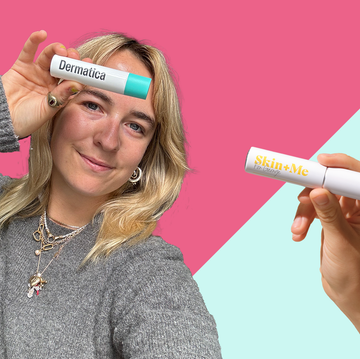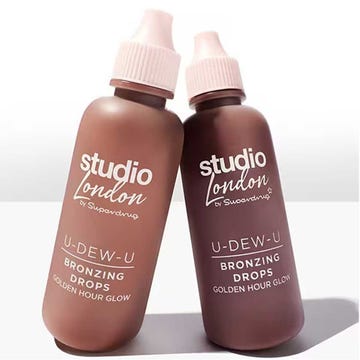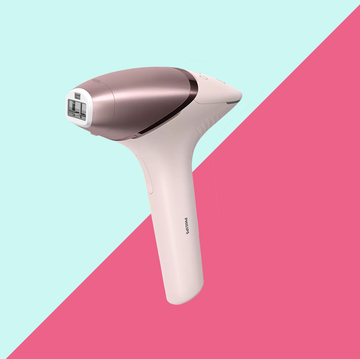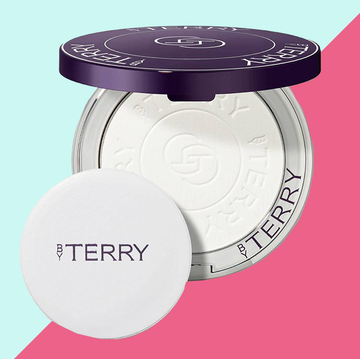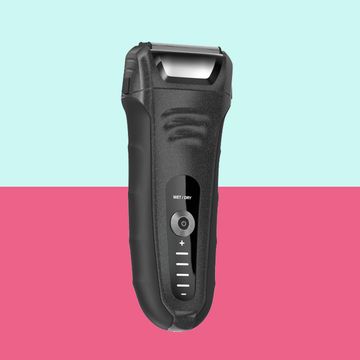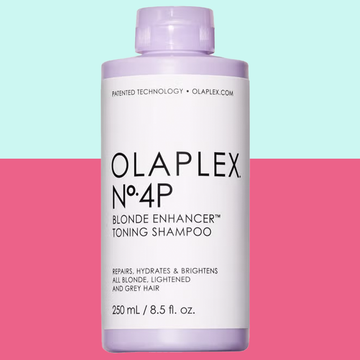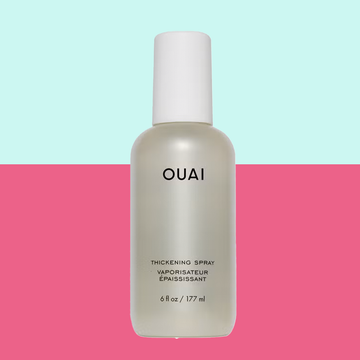1066. The War of The Roses. Coleen Rooney vs. Rebecca Vardy. We all have our battles to fight, and mine (especially come summer) is trying to get rid of those annoying little bumps on the tops of my arms. It may seem trivial, but if you’ve got keratosis pilaris (KP) yourself – or ‘chicken skin’ as it’s so affectionately called – then you’ll understand.
I can never work out if they’re related, but the bumpy areas tend to get redder when I sweat, and I notice my arms looking hammy in pictures. The skin is also rough to the touch. When I stroke my friends’ arms when they confide in me or say something adorable, I’m always distracted from the bonding moment because my brain gets caught in a loop about how soft and gentle their skin feels compared to mine.
I’ve tried all the scrubs and ‘resurfacing’ moisturisers. I’ve tried finishing my showers off by switching to cold and contorting myself under the stream of water to get those rough patches as cold as possible (said to close pores and prevent breakouts). Nothing has worked. Until I tried this targeted skincare range. Here’s what you need to know.
The Ameliorate KP range at a glance
Pros
- Started smoothing skin after the first or second use
- Relatively easy to incorporate into your shower routine
Cons
- The shower gel bottle stopped releasing product, so I had to start a new one.
- The cream you put on before the shower requires time to sink in before rinsing.
I discovered Ameliorate a few years ago when I was grumbling to other beauty writers about my KP gripe, but I was never consistent with trialling the products, only ever using the scrub. This time, I was determined to give the range a full test.
What’s so special about it? The skincare range was inspired by Ameliorate founder Annette Luck’s own KP battle. After years of trying to find a solution, she created her own: a full body skincare system that aims to smooth away bumps, resurface rough skin and prevent ingrown hairs.
The expert verdict
“To combat keratosis pilaris, typically, formulas need to include ingredients that target roughness and dry skin,” Maria Kumar, head of beauty testing at the Good Housekeeping Institute, tells me. “Look for products that contain a combination of hydrators and keratolytic agents. Keratolytics help to promote the shedding of the outer layer of the skin and work by softening the keratin layer and encouraging exfoliation.
“The Ameliorate range contains a unique blend of exfoliating and hydrating actives, aka the LaH6 Skin Hydrating Complex, which the brand has created to tackle KP. The complex blends lactic acid, a gentle alpha hydroxy acid (AHA) that exfoliates dead skin cells and helps smooth and diminish rough patches; urea, which helps to disrupt the structure of keratin in the skin and break down dead skin cells; and sodium lactate, a multifunctional ingredient that boasts both keratolytic and hydrating properties.
“Add to that serine, an amino acid that helps regulate hydration and skin pH, plus soothing allantoin and hydrolysed milk protein to prevent moisture loss, and you’ve got a powerhouse combination.”
My honest review of Ameliorate’s KP range
I tested the range over three weeks, following the instructions provided. I used the scrub, shower gel and body lotion every time I showered (every other day). Switching out my regular shower gel for the Ameliorate Nourishing Body Wash has been the simplest swap by far.
I’m not so great at practising what I preach when it comes to body care – because I don’t apply fake tan, I rarely exfoliate unless my dry, crispy legs are in dire straits. My skin is also fairly oily, so I don’t often feel the need to moisturise my body. That meant remembering to incorporate the Smoothing Body Exfoliant and the Transforming Body Lotion was the most labour-intensive part of this trial (it’s a hard life, I know).
However, after years of half-heartedly testing KP products, I've been really inspired by the tangible results so far, which is motivating me to stay consistent. My skin feels softer, appears less red and inflamed, and the bumps (for the most part) feel smooth.
In my pictures, you may be able to see that the follicles are still visible, but they previously looked far more obvious and inflamed. My only complaint about the range – and I could have just been unlucky – was that my shower gel bottle got blocked and I had to ask for a replacement. I’ve looked online and I can’t see any mentions of this in product reviews, so I may have just had a dodgy lid.
Overall, I’ll be recommending these easy-to-use products to any friends who feel frustrated with their persistent ‘chicken skin’. But do bear in mind that they aren’t miracle workers – they’re more effective at smoothing the bumps than totally eliminating them. But it’s definitely good enough for me to get my arms out this summer.
Keratosis pilaris FAQs
I asked Consultant Dermatologist, Dr Alexis Granite, to break down exactly what’s behind those annoying bumps on my upper legs and arms.
What is keratosis pilaris?
“Keratosis pilaris (KP) is a very common skin condition, characterised by small bumps around hair follicles,” Dr Granite says. “KP is also known as ‘strawberry’ or ‘chicken’ skin and tends to impact the upper arms, legs and bum. It may also occur on the face, particularly in children.
“It’s caused by small keratin plugs within hair follicles. With sweat, heat, humidity and occlusion, it can become irritated and inflamed and resemble breakouts. To treat, reach for ingredients that exfoliate and reduce inflammation to help improve skin’s appearance – including salicylic acid, alpha hydroxy acid, retinol, benzoyl peroxide and niacinamide.”
What causes keratosis pilaris?
“KP is an inherited condition, because certain genetic factors can cause the skin to produce too much keratin, which builds up in hair follicles and creates the bumps,” explains Dr Granite. “Hormonal changes, particularly during adolescence or pregnancy, can also trigger or worsen KP for some people.”
What does KP look like on different skin tones?
“KP can look different depending on your skin tone,” Dr Granite tells us. “On lighter skin, it often appears as red or pinkish bumps, while on darker skin tones, it may present as brown, dark purple, or even flesh-coloured bumps. While the bumps are generally the same, the pigmentation can vary, making it more or less noticeable depending on your skin colour. KP bumps may also be surrounded by a slightly rough or dry area of skin.”
Are there any in-clinic treatment options for KP?
“It’s important to remember that there is no cure for KP,” Dr Granite says. “But the condition can be managed and improved with skincare and there are several in-clinic options available to help, too, such as chemical peels and intense pulsed light to improve colouration.”
Florence is our Senior Beauty Writer, specialising in expert-tested beauty and grooming reviews — from toothbrushes to the latest skincare launches. She’s committed to sharing recommendations for products that truly work and make people feel confident and healthy. Prior to this she was at Tropic Skincare, where she worked closely with biochemists in the lab, delving into the functions of each fresh, natural ingredient and conveying its efficacy to her audience in easy-to-digest terms.
With over five years’ experience in beauty and health journalism, Florence has written for ELLE, Women’s Fitness, Sister Magazine, National Geographic Traveller and many more, with a strong sustainability angle thread through much of her work.
When she isn’t packing for a trip away, working out, eating out or reading up on retinol serums, you’ll probably find her experimenting with her film camera and building her portfolio of portraits. Florence’s photography can be found at florencereeves-white.com, her Instagram is @florencereeveswhite and her twitter is @floreadsnwrites









